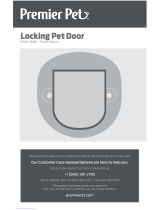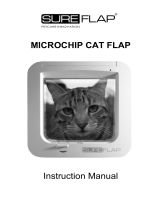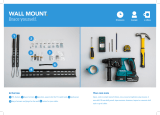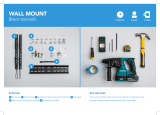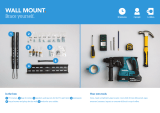4
Important: If pairing the pet door to your pet’s microchip, do a little additional testing after pairing to make sure the pet door can
reliably sense your pet as they pass near the door. In some cases, it is possible to pair the pet’s microchip with the door, but not for
the pet to activate the door during practical use. This is generally due to the location of the microchip in the pet and its distance
from the sensor as they approach the pet door. If you find this to be the case for your pet, you may have to use the SmartKey™ for
pairing instead.
Install the pet door
Once you’ve connected the pet door to Wi-Fi and paired it to each of your pets, you are ready to install it in your door.
Important: Remove the batteries from the pet door prior to installation.
Mark the pet door location
1. Measure your pet’s shoulder height when standing. Make a note of this measurement.
If you have more than one pet, measure the tallest one.
2. Decide how high you want to mount the pet door. Ideally, the top of the pet door opening should be at your tallest pet’s
shoulder height; but if you have a very large pet and a very small pet, or an immediate step down just outside your door, you
may need to mount the pet door lower to ensure all your pets can use it successfully, both coming and going.
Remember — to maintain the structural integrity of your door, the pet door opening should be at least 3 inches away from the
bottom and sides of the door.





















